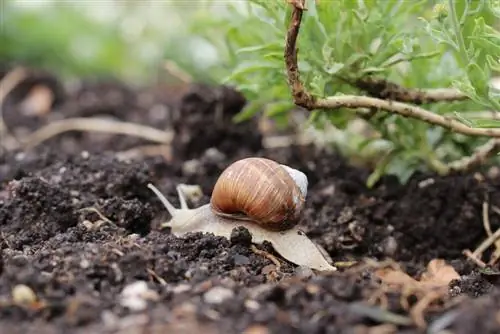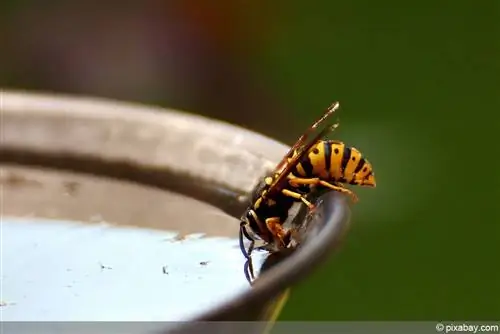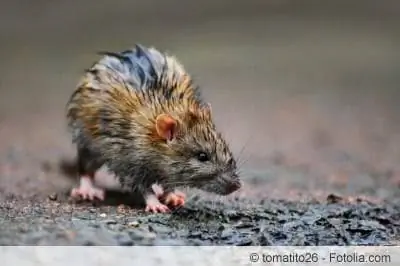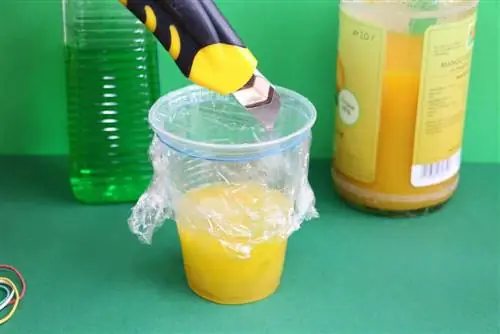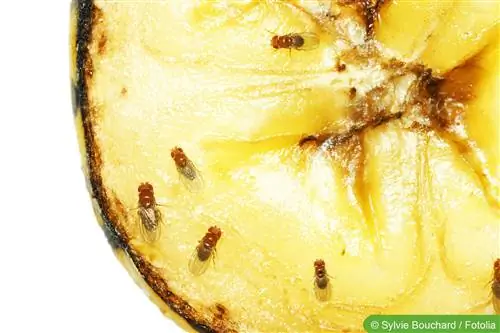- Author admin [email protected].
- Public 2023-12-17 03:39.
- Last modified 2025-01-24 12:45.
A snail trap or slug trap can be built quickly and easily. All you need are simple resources that are usually already available in the garden.
Prevention
A raised bed is in itself less likely to be attacked by snails, as the potential pests tend to stay on the ground and only overcome larger hurdles when there are special temptations, such as young lettuce, cabbage or strawberry plants.
However, the raised beds alone are no guarantee that snails will stay away and will not damage any plants. However, there are ways to make the beds safer. This includes the following means and measures:
- Attach the snail sheets or snail edge
- Wrap snail wire around the bed at the bottom and top
- set up a snail trap right next to the raised bed
- choose a conical shape for the bed
- integrate sharp and protruding edges
Above all, snail plates ensure that snails and slugs are slowed down when they try to crawl up the bed and can be picked up or fall off straight away and land back on the ground.
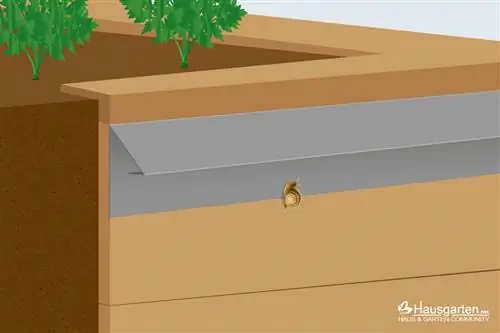
Additional snail traps in the immediate vicinity of the bed can also help protect the plants. In addition to the raised bed, there are also other options for prevention.
These include:
- Limit beds and young plants with boards or lawn edges and auger plates
- Collect snails and release them at least one kilometer away
- Remove and destroy snail eggs
- Keep your garden close to nature to attract natural predators such as birds, hedgehogs and shrews
Live Traps
A very simple, quick and efficient variant of snail traps are live traps. These can be created in several ways. Since snails like cool, damp and dark areas and avoid the blazing sun, they seek sheltered and shady areas during the day, especially in spring and summer. Possible traps for the pests are therefore:
- a wet board placed on four stones
- Foil
- moist fleece
- Clay roof tiles
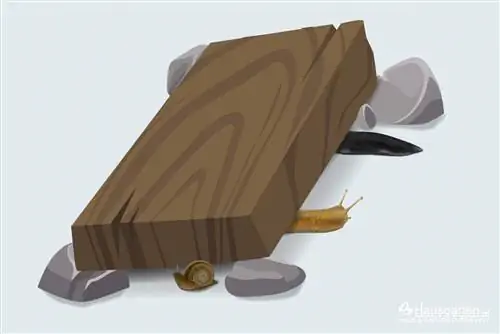
These are simply placed on the ground or lightly supported with a few smaller stones to create a space between the ground and the cover. When using a live trap, it is important to lift the board, foil or brick in the evening just before dusk and collect all the snails.
For example, they can be released in a forest or simply about a kilometer away. Otherwise, you can expect them to be back in the garden soon. From early autumn onwards, the eggs of the pests can also be found in these live traps for snails. If these are collected and destroyed, the future population can be specifically minimized.
Falling with beer
A snail or slug trap with beer is very easy to build yourself. All you need is:
- Vessels, such as deep plates, small buckets, bowls or plastic cups
- Stale leftover beer
- a small shovel or shovel
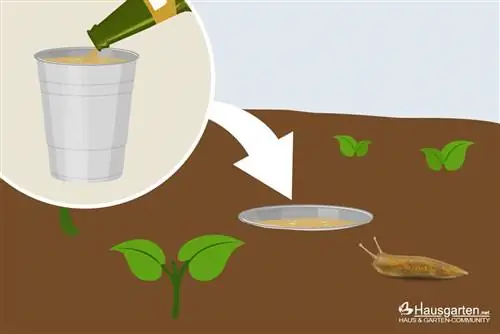
The procedure is simple and only requires a few steps:
- A hole is dug that is just big enough for the respective vessel.
- The vessel is inserted. The top edge should be level with the surface of the earth. The soil is filled back in around the container and lightly pressed down. This means that the slug trap cannot fall over or move. As an alternative to traps buried in the ground, stable containers can also simply be placed in the garden.
- Once these preparations have been completed, beer can be filled into the vessels. Bowls of beer leftovers are particularly suitable. However, you can also use a cheap type of beer, which will also go stale after a few hours in a mug or bowl.
- The snails are attracted to the smell of the beer and fall into the containers when they try to get closer. The liquid should be filled so high that the pests drown in it.
- If enough snails have been caught or the liquid has evaporated, the container can be removed from the hole and the dead snails disposed of.
The advantage of this type of trap is that it is very easy to build yourself and is hardly noticeable because it is buried in the ground. The problem, however, is that other animals can also be attracted by the smell and die in it.
Tip:
If there are no snails in the garden or a bed yet, the beer traps should be set up or buried at the property line. Otherwise, the pests could actually be drawn to the plants by the smell of beer.
Traps with lures
Not only beer can be used as an attractant. Other simple home remedies can also be used to set up traps and attract the snails. All that is required is suitable containers and kitchen waste. Suitable vessels and materials include:
- Flowerpots
- small Styrofoam containers
- Plastic boxes (e.g. ice cream packaging)
- Pond and garden liner
Suitable attractants are:
- sliced peppers
- green cucumbers or cucumber peels
- Carrot peels
- hollowed tomatoes
- Lettuce leaves
- Fruit leftovers
The snail traps can be used as live traps or to combat pests. If you just want to attract the molluscs, proceed as follows:
- Place vegetable or fruit scraps in a dark, moist area. For example, under a hedge, under a perennial or in a shady corner.
- Cover the attractants with the chosen container or with foil. Care must be taken to ensure that the container is only loosely placed on the ground and that the snails can still penetrate between the edge and the substrate. Alternatively, shallow bowls can be chosen and filled with the leftovers.
- Once a day before dusk, the pests can be collected from the containers and then released far away.
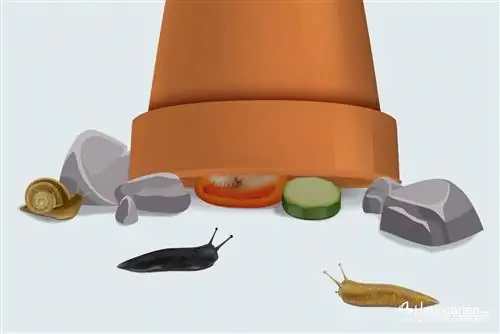
If you don't want live traps, you just have to follow the steps mentioned. However, the attractants are mixed with slug pellets. The deadly agent is ingested by the animals when they eat the vegetables or fruits. As a rule, it is then sufficient to replace the attractants once a week, mix them with new snail pellets and remove the dead snails.
Check and collect
The traps have the advantage that only little effort is required to catch the snails. However, if the molluscs are already in the bed or on the plants, the only solution is to collect them by hand. Young plants in particular can be completely bare and destroyed by a single snail. Even if traps are present, regular checks should be carried out and the pests collected.

